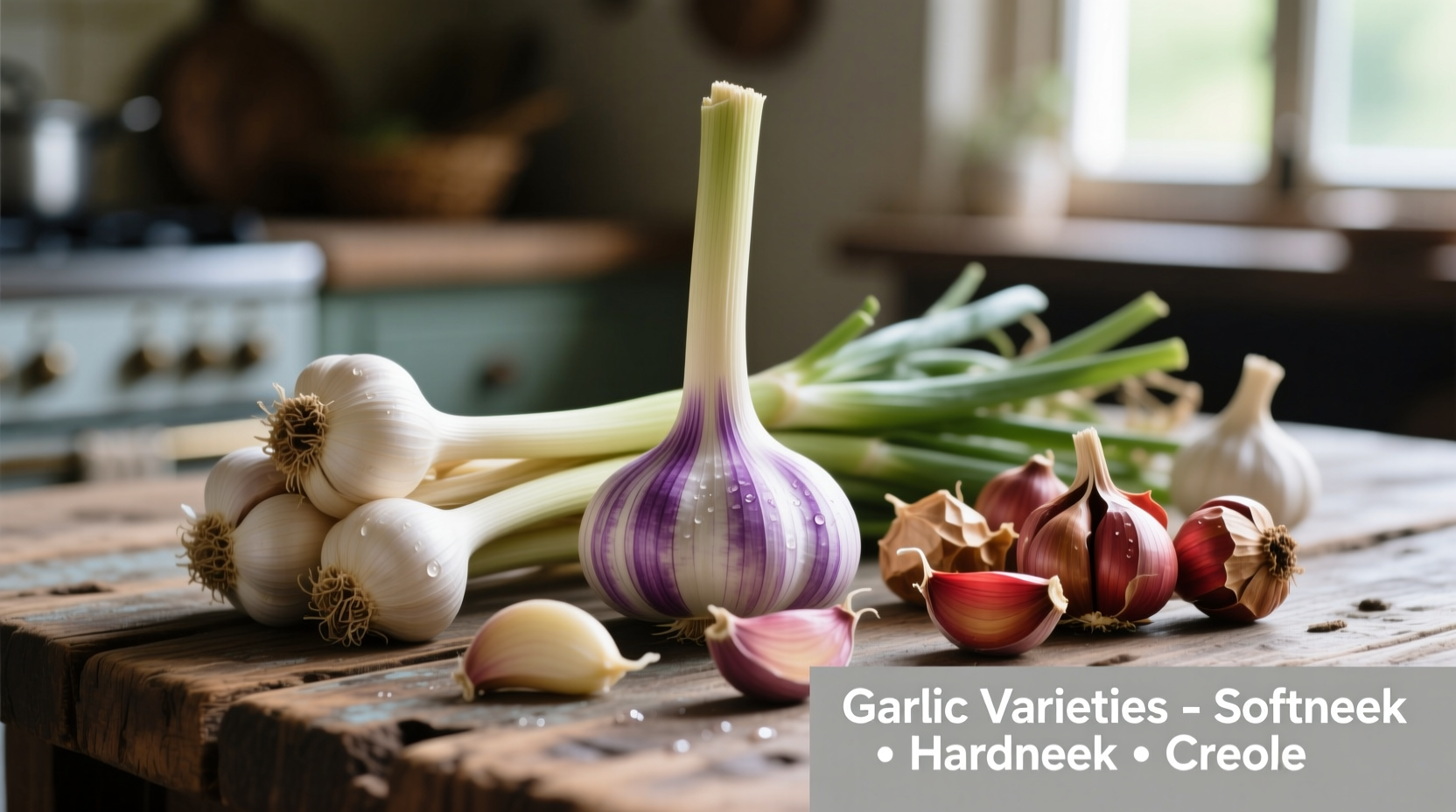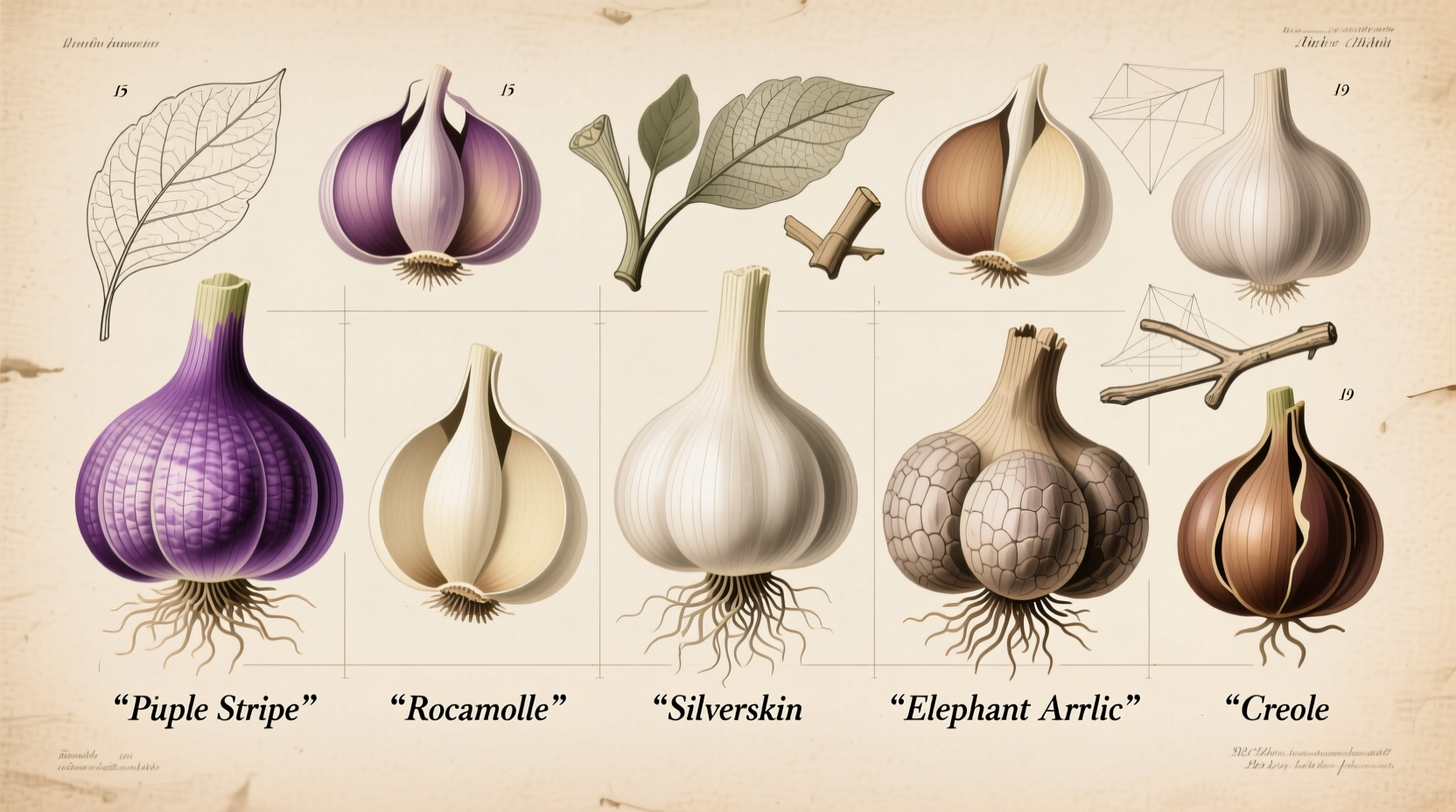When exploring different types of garlic, understanding their unique characteristics transforms your cooking. Professional chefs and home cooks alike benefit from knowing which garlic variety best suits specific recipes, storage needs, and flavor profiles. This comprehensive guide breaks down the essential garlic types you'll encounter, backed by agricultural research and culinary expertise.
How to Visually Identify Garlic Varieties
Telling garlic types apart starts with examining physical characteristics. The number of cloves, skin color, stem structure, and bulb size provide immediate clues. Softneck varieties have flexible stalks you can braid, while Hardneck types develop stiff central flower stalks called scapes. Creole garlic stands out with its deep burgundy wrappers, and Elephant garlic bulbs can be three times larger than standard varieties.
| Garlic Type | Clove Count | Flavor Intensity | Storage Life | Best Culinary Uses |
|---|---|---|---|---|
| Artichoke (Softneck) | 12-20 | Medium | 8-10 months | Roasting, sauces, general cooking |
| Silverskin (Softneck) | 16-24 | Mild to medium | 10-12 months | Braiding, pickling, raw applications |
| Rocambole (Hardneck) | 8-12 | Strong, complex | 4-6 months | Sautéing, grilling, flavor-forward dishes |
| Porcelain (Hardneck) | 4-6 | Very strong | 5-7 months | Hearty stews, winter dishes |
| Creole | 8-12 | Hot, rich | 6-8 months | Spicy sauces, Southern cuisine |
| Elephant | 4-6 | Mild | 5-6 months | Raw applications, subtle flavor needs |
This garlic variety comparison chart, verified through the Garlic Seed Foundation and University of Minnesota Extension research, shows critical differences affecting your cooking results. Notice how Hardneck varieties generally offer more complex flavors but shorter shelf life compared to Softnecks.

Garlic Evolution: From Wild Origins to Modern Varieties
Garlic's journey spans over 5,000 years from its Central Asian origins. According to USDA Agricultural Research Service documentation, wild garlic (Allium longicuspis) evolved into two main cultivated subspecies:
- Softneck garlic (Allium sativum var. sativum) - Developed in Mediterranean climates, favored for commercial production due to longer storage
- Hardneck garlic (Allium sativum var. ophioscorodon) - Better suited for colder climates, produces edible scapes
This evolutionary split explains why certain garlic types thrive in specific regions. The Garlic Seed Foundation notes that Hardneck varieties dominate northern growing regions while Softnecks prevail in southern climates—a crucial consideration when selecting planting stock.
When to Use Each Garlic Type: Practical Applications
Understanding context boundaries prevents culinary disappointment. Each garlic variety performs best in specific situations:
Softneck Garlic Applications
Artichoke garlic works perfectly when you need reliable medium heat that holds up during extended cooking. Its multiple small cloves make it ideal for roasting whole heads or creating garlic-infused oils. Silverskin garlic shines in raw applications like aioli or salad dressings where its milder flavor won't overpower other ingredients.
Hardneck Garlic Applications
Rocambole delivers the most complex flavor profile, making it chef Antonio Rodriguez's top choice for dishes where garlic plays a starring role. Its easy-to-peel cloves work well for quick sautés. Porcelain garlic provides intense heat that stands up to long braising times—perfect for winter stews and hearty meat dishes.
Specialty Garlic Applications
Creole garlic brings distinctive heat to Cajun and Creole dishes, while its deep purple skin adds visual appeal to presentations. Elephant garlic serves as the solution when you want garlic presence without overwhelming heat—excellent for garlic bread or raw applications where standard garlic might prove too strong.
Storage Guidelines for Maximum Freshness
Proper storage preserves each garlic type's unique qualities. Softneck varieties generally outlast Hardnecks:
- Softneck garlic lasts 8-12 months when stored in mesh bags in a cool, dark place with good air circulation
- Hardneck garlic maintains quality for 4-7 months under similar conditions
- Elephant garlic requires cooler temperatures (50-60°F) for optimal 5-6 month storage
Avoid refrigeration for most garlic types, as the University of California Cooperative Extension warns this promotes sprouting and mold. Instead, store in well-ventilated containers away from direct sunlight.
Finding Authentic Garlic Varieties
Locating specific garlic types requires knowing where to look:
- Farmer's markets - Best source for regional varieties like Creole in the South or Porcelain in northern states
- Specialty seed catalogs - Garlic Seed Foundation members offer certified disease-free planting stock
- International markets - Often carry unique regional varieties not found in standard grocery stores
When selecting garlic, look for firm bulbs without soft spots, tight wrappers, and no signs of sprouting. Larger cloves typically indicate Hardneck varieties, while multiple small cloves suggest Softneck types.
Common Questions About Garlic Varieties
Understanding these frequently asked questions helps maximize your garlic usage:











 浙公网安备
33010002000092号
浙公网安备
33010002000092号 浙B2-20120091-4
浙B2-20120091-4